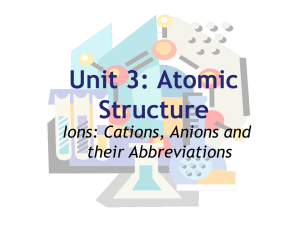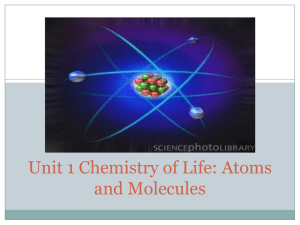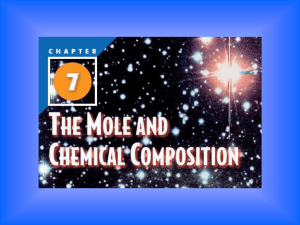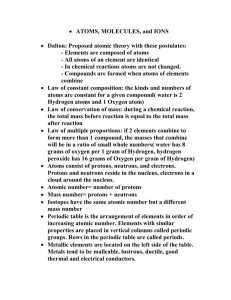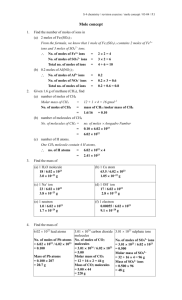PRAXIS II CHEMISTRY PRACTICE QUESTIONS & ANSWERS
advertisement
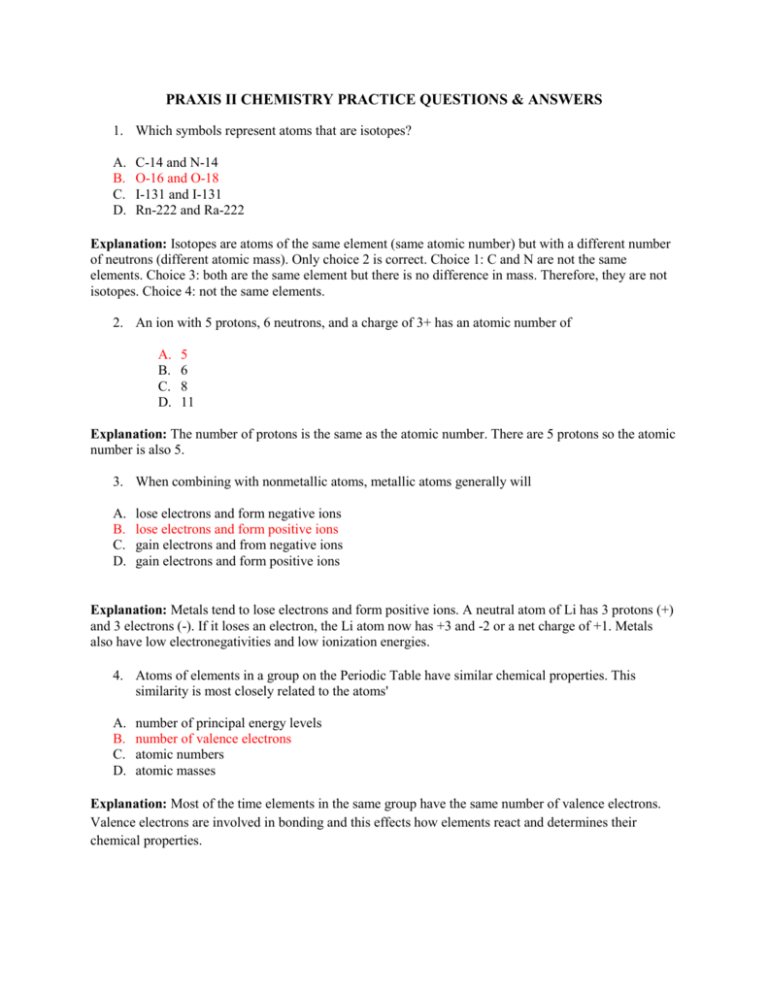
PRAXIS II CHEMISTRY PRACTICE QUESTIONS & ANSWERS 1. Which symbols represent atoms that are isotopes? A. B. C. D. C-14 and N-14 O-16 and O-18 I-131 and I-131 Rn-222 and Ra-222 Explanation: Isotopes are atoms of the same element (same atomic number) but with a different number of neutrons (different atomic mass). Only choice 2 is correct. Choice 1: C and N are not the same elements. Choice 3: both are the same element but there is no difference in mass. Therefore, they are not isotopes. Choice 4: not the same elements. 2. An ion with 5 protons, 6 neutrons, and a charge of 3+ has an atomic number of A. B. C. D. 5 6 8 11 Explanation: The number of protons is the same as the atomic number. There are 5 protons so the atomic number is also 5. 3. When combining with nonmetallic atoms, metallic atoms generally will A. B. C. D. lose electrons and form negative ions lose electrons and form positive ions gain electrons and from negative ions gain electrons and form positive ions Explanation: Metals tend to lose electrons and form positive ions. A neutral atom of Li has 3 protons (+) and 3 electrons (-). If it loses an electron, the Li atom now has +3 and -2 or a net charge of +1. Metals also have low electronegativities and low ionization energies. 4. Atoms of elements in a group on the Periodic Table have similar chemical properties. This similarity is most closely related to the atoms' A. B. C. D. number of principal energy levels number of valence electrons atomic numbers atomic masses Explanation: Most of the time elements in the same group have the same number of valence electrons. Valence electrons are involved in bonding and this effects how elements react and determines their chemical properties. 5. An atom of which of the following elements has the greatest ability to attract electrons? A. B. C. D. silicon sulfur nitrogen chlorine Explanation: Electronegativity is a measure of the ability of an atom to attract electrons. The greater the ability to attract, the higher the electronegativity. Chlorine has the highest electronegativity of the choices given. 6. What is the gram formula mass of K2CO3? A. B. C. D. 138 g 106 g 99 g 67 g Explanation: Find the formula mass in grams. K =39 x 2 = 78 g; C =12 x 1 = 12 g; O =16 x 3 = 48 g. Total is 78 + 12 + 48 or 138 g. 7. What is the total number of atoms contained in 2.00 moles of nickel? A. B. C. D. 58.9 118 6.02 x 1023 1.2 x 1024 Explanation: By definition one mole is 6.02 x 1023 atoms. Two moles is twice that amount or 12.04 x 1023 atoms or 1.2 x 1024. (Do not forget to move the decimal). Answer is 1.2 x 1024 atoms. 8. What is the total number of moles of hydrogen gas contained in 9.03 x 1023 A. B. C. D. 1.5 moles 2.00 moles 6.02 moles 9.03 moles Explanation: Divide 9.03 x 1023 by 6.02 x 1023 to find the number of moles of hydrogen gas. 9.02 / 6.02 = 1.5 moles (remember the numerator and denominator each contain 10 to the 23, so this cancels out. 1 mole equals 6.02 x 1023 molecules).




